MARKET OVERVIEW
The Global Industrial Protective Footwear is one of the most vital sectors of the safety gear market, and its height keeps on growing across industries. It protects workers' feet in industries ranging from construction, manufacturing, mining, and oil and gas. With industrial activities getting more complicated and heavy, the demand for protective yet reliable footwear is likely to grow.
Industrial protective footwear protects the wearers from falling objects, electrical risks, chemical spills, and many other elements at work. In increasing safety measures at workplaces, growth is expected to be observed in the global industrial protective footwear market. Companies will definitely invest in developing more advanced protection equipment to fit strict standards of safety that will fuel the growth of this particular market.
The key role in the development of the Global Industrial Protective Footwear market is most likely to be played by innovation in the near future. The manufacturing companies could try adding newer materials and newer technologies to their products, coupled with improved functionalities for safety. For example, lighter but stronger materials would enhance comfort without compromising on the safety aspects. Other features likely to become common include smart technologies, including in-shoe sensors that monitor workers for early signs of fatigue and environmental conditions. Another likely influencer on the appearance of the Global Industrial Protective Footwear market in the near future is sustainability.
As more and more people around the world become more concerned about the environment, it is likely that manufacturers will lean toward sustainability regarding materials and processes. Sustainability will definitely apply not only to fulfilling regulative demands but also to environmental awareness among consumption. This will see the wide usage of recyclable materials, energy-efficient manufacturing processes that cut down the carbon footprint of the industry. Customization is another trend that is going to dictate the future course which the Global Industrial Protective Footwear market takes. Diversity in the number of industrial tasks is on the increase, and definitely, due to the need for customization according to unique industry needs, one-size-fits-all solutions will no longer be effective.
Manufacturers will have to come up with customizable options best fitting specific industries. It will stretch down to design, fit, and functionality so as to ensure that protective footwear really meets the unique requirements of the various work environments. More drive will be derived from the geographical expansion of the industries into the emerging markets while countries with growing industrial sectors emerge as a new potential source of demand in global industrial protective footwear, particularly in the Asian and African regions.
Their process of industrialization will prompt an increase in the adoption rate of protective footwear due to strict regulations in safety and more investment in worker safety. Moreover, the rise of e-commerce will, in turn, strongly support the Global Industrial Protective Footwear market. This means that digital transformation in the sales channels is enabling the enterprises to access a greater variety of products and make better purchasing decisions. Such online platforms would give them detailed specifications of the products along with user reviews to help companies select the most appropriate protective footwear for their needs. The prime concern of the market players through research and development would, in turn, be surviving in this competition. There would be a continuous need for design and material innovation so that evolving standards of safety and evolving consumers could be met. Strategic partnerships and collaborations help in the trade of knowledge and technological advancements between different stakeholders within the industry.
The future befits impressive growth and transformation of global industrial protective footwear markets. Further developments will be made in technology, sustainability, and customization that even better raise the standards for workers' safety and increase prospects for meeting regulatory demands. With the development of industries all over the world fast becoming conscious about the importance of protective footwear at workplaces, the market is bound to continuously see a transformation with new innovative solutions emerging to ensure workers' safety and well-being across all industries.
Global Industrial Protective Footwear market is estimated to reach $9,186.3 Million by 2031; growing at a CAGR of 5.8% from 2024 to 2031.
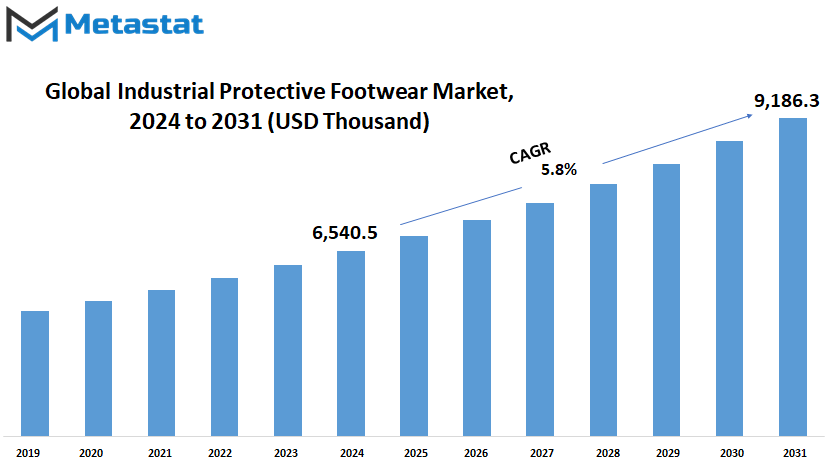
GROWTH FACTORS
The Global Industrial Protective Footwear market is touted to witness tremendous growth driven by a host of factors. One of the major drivers driving this growth is increasing awareness about safety at work. The more the number of organizations taking steps for protecting their workforce from potential hazards, the more will be the demand for industrial protective footwear. The strict regulations related to safety standards also force them to engage in the buying and distribution of protective gear to the working staff in order to protect them from falling prey to injuries.
Besides, growth in the industries related to industry,. In particular, construction and manufacturing will boost demand for protective footwear. This is because these two industries often integrate a variety of dangers within them, such as falling objects, sharp materials, and slippery surfaces. Thus, firms operating in these areas will be increasingly concerned with equipping high-quality protective footwear for their workers since they have realized that this kind of investment could reduce the rate of being injured and lower insurance costs.
While prospects for the Global Industrial Protective Footwear market may look tantalizing, things are not quite that straightforward. This expensive top-of-the-line protective footwear, for instance, could prove a little too pricey for a small or medium-scale industry. It may not be easier to assess budgets on top-tier protective gear, which may eventually lower the safety standards in most of these companies' operations. Furthermore, low awareness about safety measures and regulations in developing regions might hamper the growth of the market. Businesses in these regions are less aware of the benefits associated with investment in protective footwear and hence often end up impacting the overall safety outcome.
Despite these, opportunities abound in the sphere of market innovation. Economical and comfortable development of industrial protective footwear will have increased scope, especially in developing economies. Companies that are specially eyeing production in the low-cost safety solution segment with effectiveness will likely find lucrative business opportunities in years to come. Added to this, taking care of unique needs across diversified industries paired with focusing on comfort and affordability will help manufacturers tap into this growing market segment of people wanting safety without having to spend an arm and leg for the same.
In a nutshell, it is envisioned that the Global Industrial Protective Footwear market would garner growth impetus with growing awareness about safety and expansion in industries. While channels on entrusted affinity, cost, and awareness persist, developing affordable and comfortable protective footwear does bring to the fore a bright future. As industries continue to turn focus towards safety, demands for such innovative protective solutions are sure to rise, and that would define the course of the market in the coming years.
MARKET SEGMENTATION
By Type
The global market for Industrial Protective Footwear is bound to grow significantly owing to the rising safety awareness among industries. The market is expected to expand with increasing safety regulations and awareness of occupational hazards. As protection for workers is considered an organizational asset, high-quality protective footwear will be in greater demand.
According to Type, the market will be segregated into Waterproof Footwear, Rubber Footwear, Leather Footwear, and Plastic Footwear. Each category of type will find its role in different applications in industries, so as to protect employees in specific working conditions. Waterproof Footwear is definitely needed in building and construction industries, as well as agriculture. This will not only provide safety but comfort, too, since workers can comfortably do their tasks without the disturbance of wet feet. It is expected that Rubber Footwear will gain momentum since it is durable and has many protecting qualities that industries, especially those involved with hazardous materials, favor.
The chemical resistance of rubber and its slip-resistant nature will make it a hit among employers who have to ensure their employees' safety. Meanwhile, Leather Footwear will still have a substantial market share due to the fact that it reflects both fashion and functionality. Leather grants comfort and protection; as such, it is proper in industrial sites to corporate environments where safety is considered as important. Although customarily less hardy, plastic footwear shall nevertheless find niches in industries requiring light and flexible shoes. As materials technology improves, plastic footwear will also continue to evolve to cater for greater protection without sacrificing comfort. This can be particularly appealing to companies that strive to balance safety with employee satisfaction, since lightweight options reduce fatigue during long work hours.
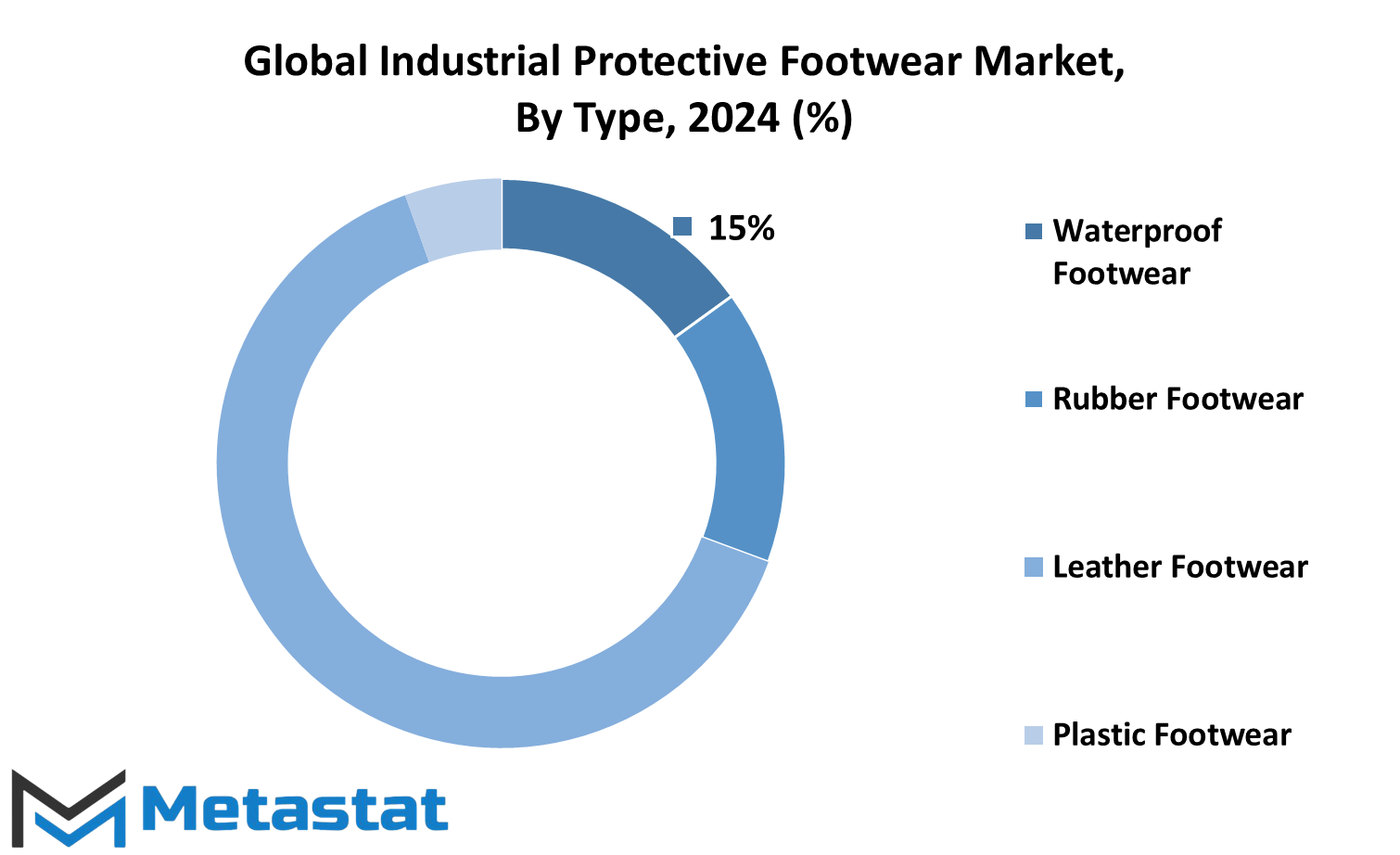
By Application
The Global Industrial Protective Footwear market is expected to exhibit amazing growth in the coming years. This growth will be facilitated by awareness related to workplace safety and the use of protective equipment at workplaces. As a result, the demand for good quality protective footwear will keep on rising since businesses will remain interested in their employees' safety.
By application, the market is divided into key sectors that have their individual sets of needs. Construction, for example, presents many types of hazards to laborers, from large machinery to objects falling. The protective footwear designed for this environment will emphasize durability and safety features such as steel toes and slip-resistant soles. The demand for reliable footwear is thus likely to rise proportionately with the increasingly complex and larger scale of construction projects.
Safety regulations in manufacturing are strict; hence the need for special footwear that will help protect workers against chemical spills and sharp objects, among other instances. The market is likely to register an influx in design innovation that not only meets the safety standards but also comfort and performance for support of productivity.
Mining is another important field of application in which industrial protective shoes are used. Workers within the mining industry can often find themselves working under hazardous conditions, such as bad topography and proximity to heavy machinery. Footwear that is intended for mining purposes will be designed with full support and protection in mind to protect workers as they move through some of the most hazardous environments.
Also, the growth in the oil and gas industry will drive the market, due to strict safety requirements for special protective footwear. The shoes within this industry should withstand harsh conditions, including chemical exposure and extreme temperatures.
Protective footwear required in the chemical, food, pharmaceuticals, and transport industries will find focus depending on the particular regulations of a specific industry. Further development is seen in all these segments, which, in turn, promotes new advances in materials and technology that provide safety features and comfort in long-hour wear.
.
|
Report Coverage |
Details |
|
Forecast Period |
2024-2031 |
|
Market Size in 2024 |
$6,540.5 Million |
|
Market Size by 2031 |
$9,186.3 Million |
|
Growth Rate from 2024 to 2031 |
5.8% |
|
Base Year |
2022 |
|
Regions Covered |
North America, Europe, Asia-Pacific Green, South America, Middle East & Africa |
REGIONAL ANALYSIS
The global Industrial Protective Footwear market is prone to grow dramatically across different regions, mainly driven by increased regulations in safety and heightened awareness for workplace safety. To one and all geographical areas, opportunities and challenges arise which become an ever-changing landscape for this market.
Stringent safety requirements across industries like construction and manufacturing can achieve added growth in the North American region in the industrial protective footwear market. It will be an extremely important role played by entities from the U.S., Canada, and Mexico, with the U.S. leading in innovation and new products. The higher investment in protective gear, the more the demand will increase for high-ended shoes, like slip-resistant soles, waterproof materials, and reinforced toe caps. Improving safety and productivity because of the adoption of good protective footwear will likely be advanced due to a great emphasis on technology and safety.
Neither will the European region be left behind, as it is countries like the UK, Germany, France, and Italy that are most likely to lead the way in the acceptance of new technologies for protective footwear. The European market is driven toward quality and sustainability, impelling the manufacturers to mull over green materials and processes. In line with the companies going green, the demand for sustainable protective footwear would rise. On the other hand, strong regulatory environments will also compel the firms to invest in employee safety, and, hence, in the market.
It is expected that the greatest growth will be observed in the Asia-Pacific region, particularly India and China, with the expansion of the manufacturing and construction sectors. With rising urbanization in those countries, demand for protective footwear will increase, as the concerns about safety will grow at the same rate as industrial development. Demand for robust and reliable footwear is going to surge as more companies begin to take note of the existence and importance of compliance with safety regulations.
In South America, countries like Brazil and Argentina will gradually be driven toward better standards of safety, due to which the growth rate for the Industrial Protective Footwear market will significantly increase. Therefore, with improving economic conditions in these nations, investments in safety gear because of growing concerns over safety shall increase, creating an enabling environment wherein the need for protective footwear becomes mandatory.
Growth will also be seen in the Middle East and Africa, driven by requirements of safety in the oil and gas, construction, and mining sectors. As industries expand in these regions, the focus on protective footwear will increase, resulting in a more substantial market presence.
In a nutshell, growth of the global Industrial Protective Footwear market will be spread across all regions, impelled by regulatory standards and demands of the industry. Each area will play its part in this overall landscape. Specific regional dynamics will spur innovations, unfortunately, setting the course for the future of workplace safety. Increasing pressure for safety is likely to mean better products that pair functionality and comfort.
COMPETITIVE PLAYERS
The Global Industrial Protective Footwear market holds immense potential due to growing demands by industries on the safety of their workers and compliance with international regulations. Key players are gearing up to meet this demand with safe and innovative protective footwear solutions. Leading vendors like JAL Group, COFRA S.r.l., and ELTEN GmbH bring new technology and design innovation to make it more comfortable while fulfilling safety parameters.
With the constant market reported, major brands like Honeywell Safety Products and Bata are investing in R&D to position themselves better with changing times. This will enable companies to focus on developing products not only based on the present safety compliance requirements but also on those aimed at facilitating the evolution of regulations over time. The competitive landscape is further enriched by players like Redwing and Rahman Group, that are committed to greater sustainability and use of eco-friendly materials in the design of their footwear.
The presence of companies such as Rock Fall Ltd. and Saina Group Co., Ltd. underlines diversified demand from various industries. They will customize their products to suit specific environments, hence rendering these shoes resistant to a myriad of dangers, including chemicals, electrical risks, and extreme temperatures. This would be the basis for gaining an edge over rivals in an increasingly saturated market.
This trend will further be topped by the Uvex Safety Group and VF Corporation in the next few years to make users experience improved. Better slip resistance, ergonomic designs, breathable materials, and other such advancements will contribute heavily to gaining a more significant customer base. Moreover, with the increasing awareness towards workplace safety created by huge campaigns worldwide, companies like Dunlop Protective Footwear and Hilson Footwear Pvt. Ltd. might enter new markets, particularly within the developing regions where industries are rapidly growing.
What really sets Wolverine World Wide Inc. apart is its incorporation of technology into its product lines, such as moisture-wicking linings and shock-absorbing soles that protect and provide comfort for long hours of wear. As these innovations continue, so will a change in consumer demand within the Global Industrial Protective Footwear market, forcing manufacturers to create new innovations for design and functionality alike.
In a nutshell, the competitiveness of the players contributing to the Global Industrial Protective Footwear market will gear the future of the industry toward a technological, sustainable, specialized one. Their efforts are not only going to redefine safety standards but enhance overall workplace experience, setting new benchmarks for quality and performance in protective footwear.
Industrial Protective Footwear Market Key Segments:
By Type
- Waterproof Footwear
- Rubber Footwear
- Leather Footwear
- Plastic Footwear
By Application
- Construction
- Manufacturing
- Mining
- Oil And Gas
- Chemical
- Food
- Pharmaceuticals
- Transportation
- Others
Key Global Industrial Protective Footwear Industry Players
- JAL Group
- COFRA S.r.l.
- ELTEN GmbH
- Oftenrich Holdings Co., Ltd. (Golden Chang)
- Honeywell Safety Products
- Bata
- Redwing
- Rahman Group
- Rock Fall Ltd.
- Saina Group Co. Ltd.
- Uvex Safety Group
- VF Corporation
- Dunlop Protective Footwear
- Hilson Footwear Pvt. Ltd
- U-power Group Spa
WHAT REPORT PROVIDES
- Full in-depth analysis of the parent Industry
- Important changes in market and its dynamics
- Segmentation details of the market
- Former, on-going, and projected market analysis in terms of volume and value
- Assessment of niche industry developments
- Market share analysis
- Key strategies of major players
- Emerging segments and regional growth potential



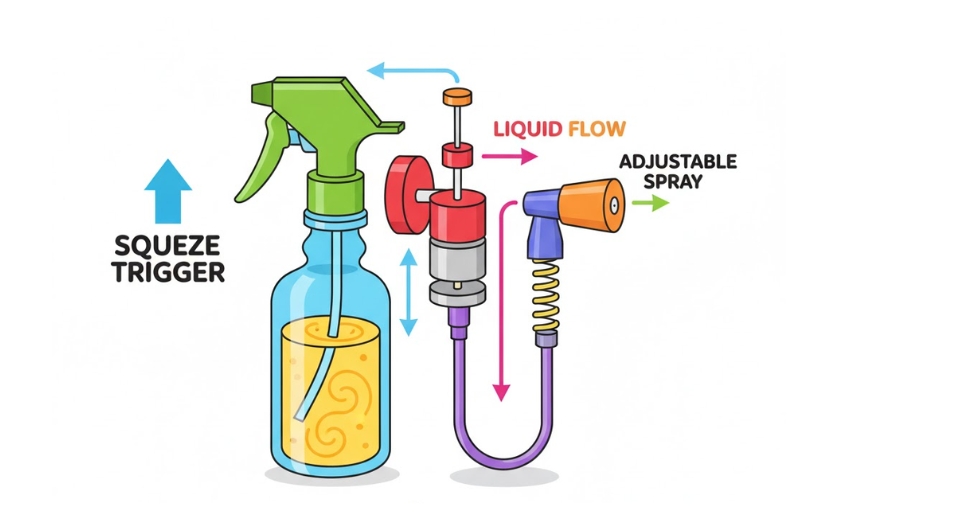
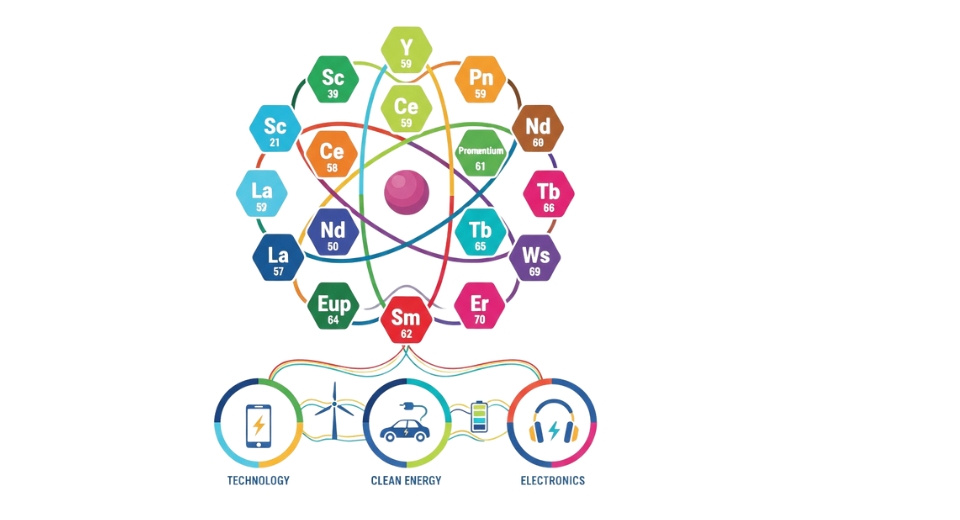
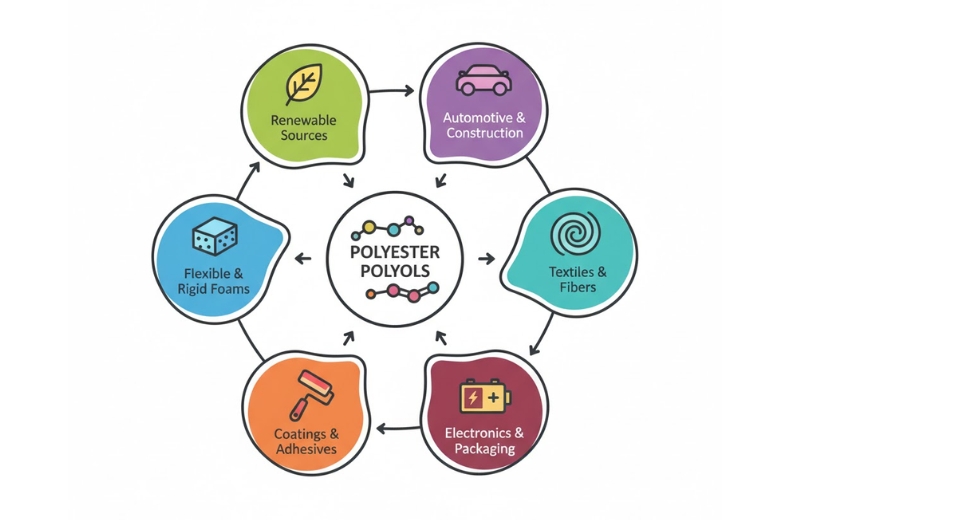

 US: +1 3023308252
US: +1 3023308252






